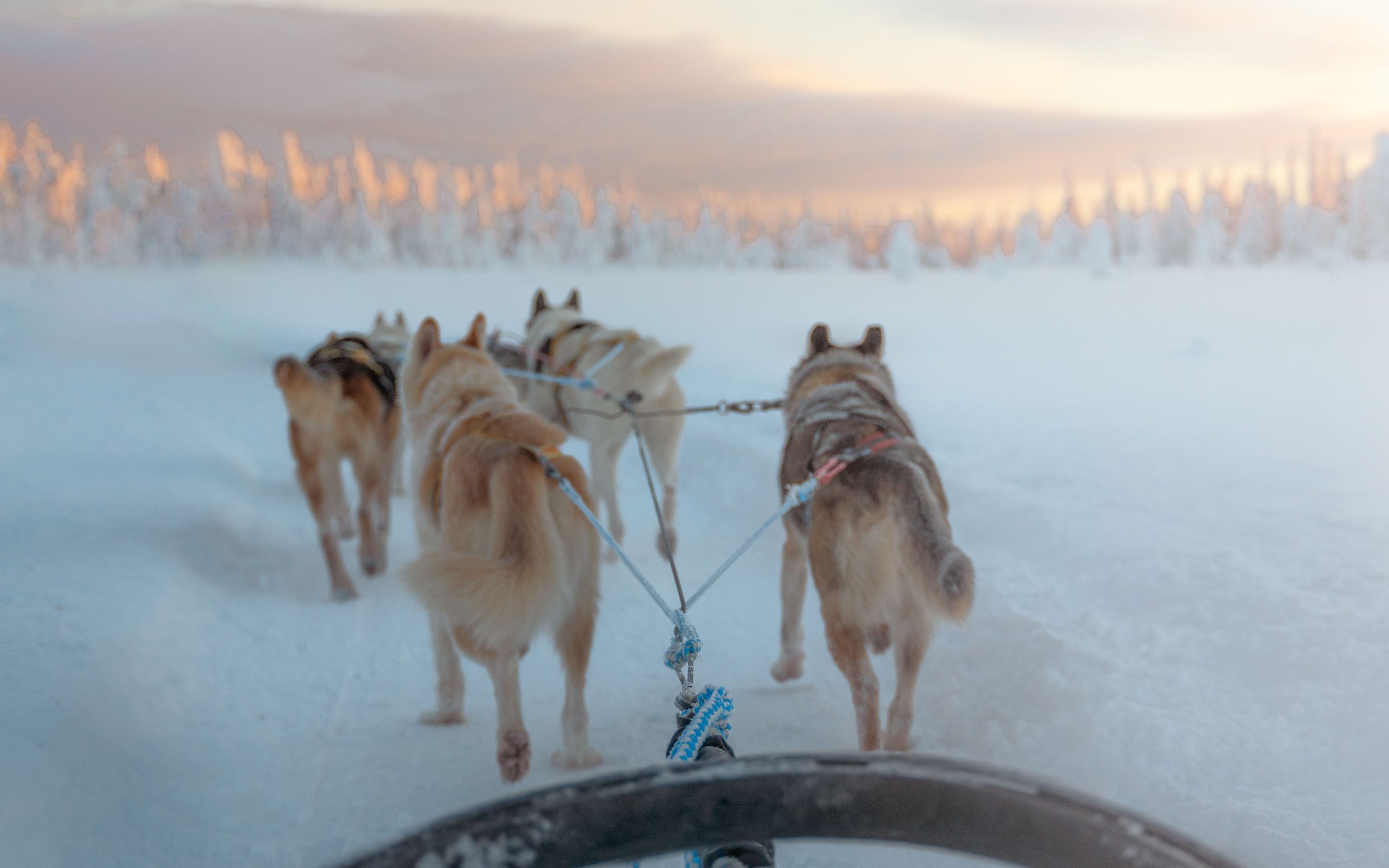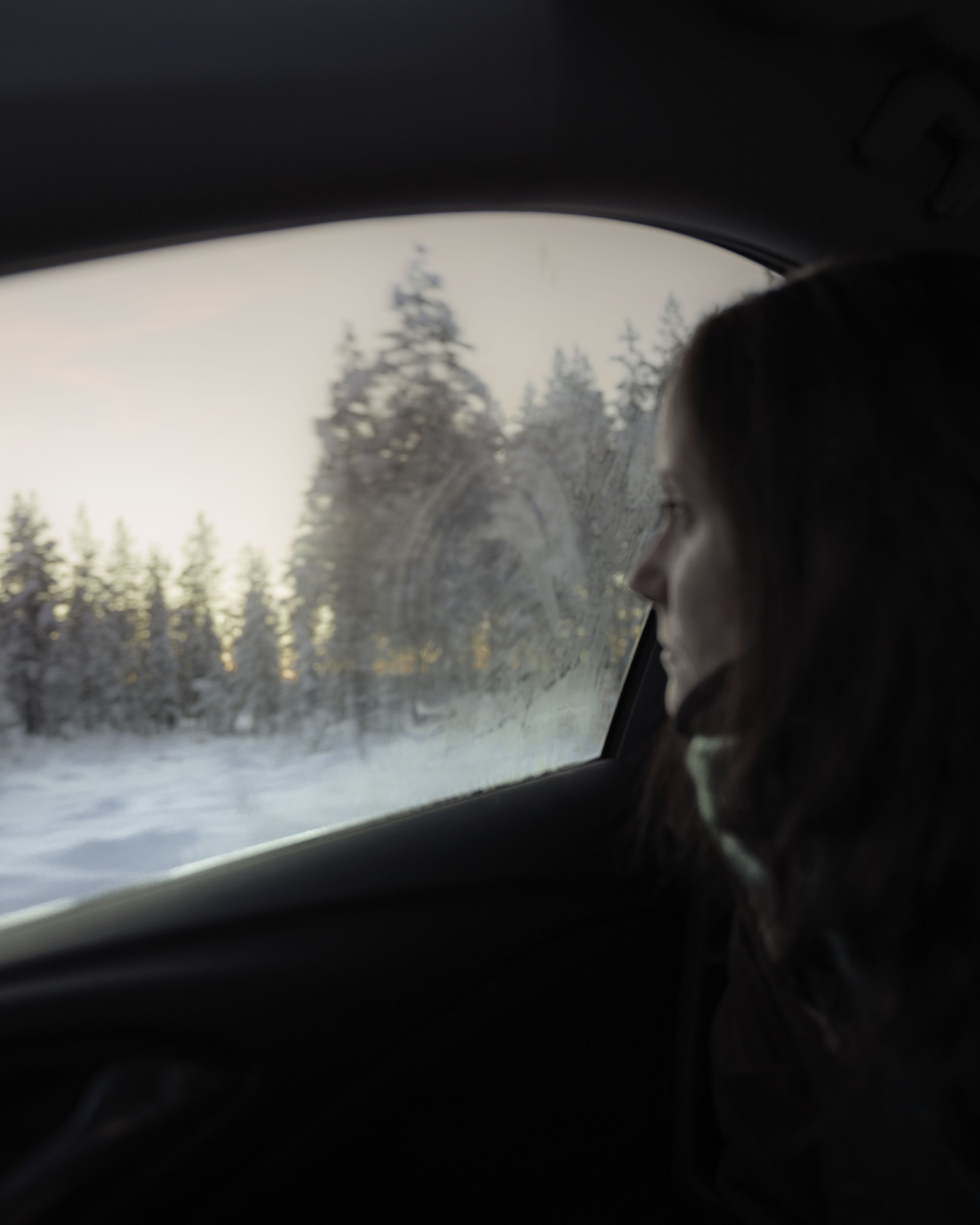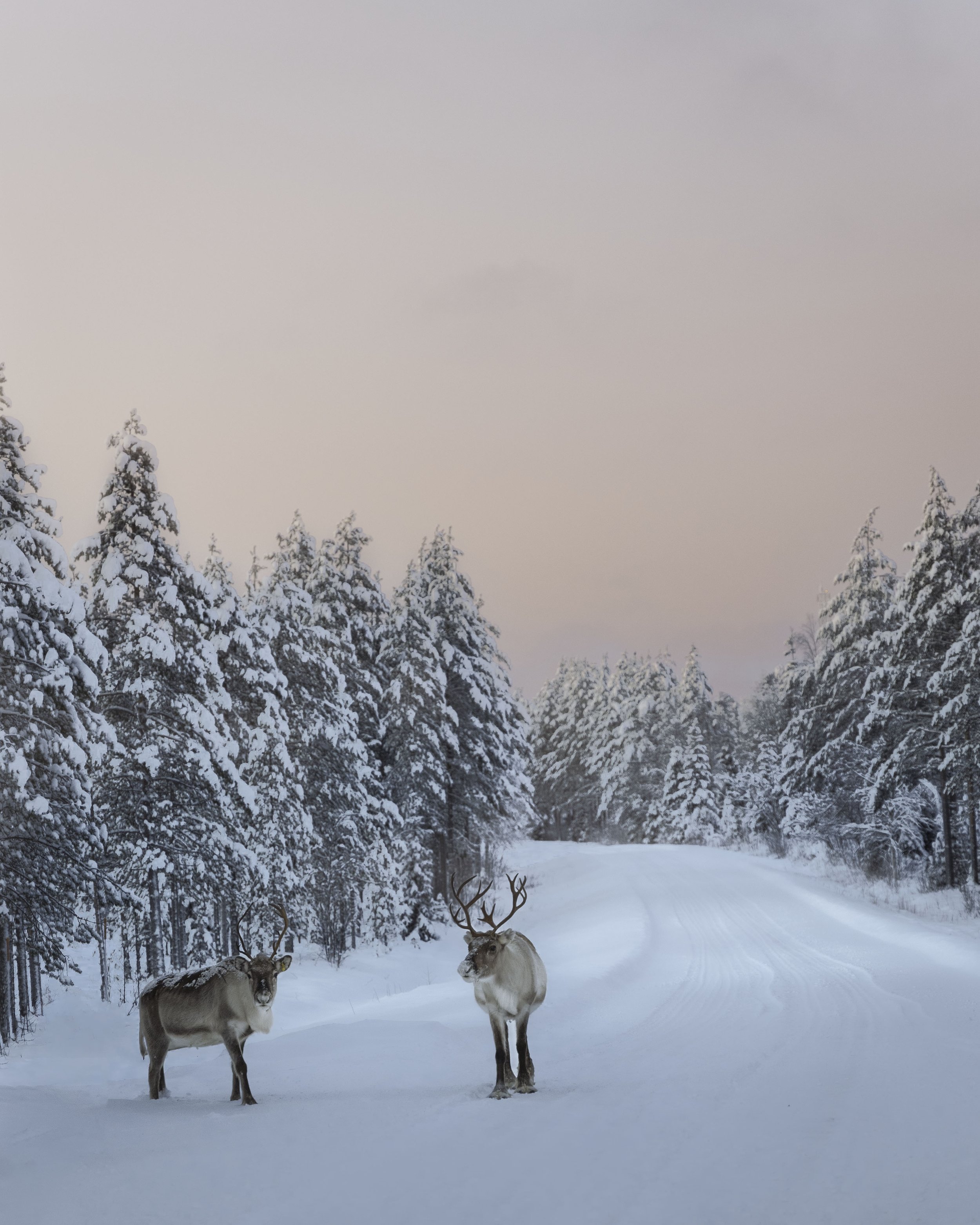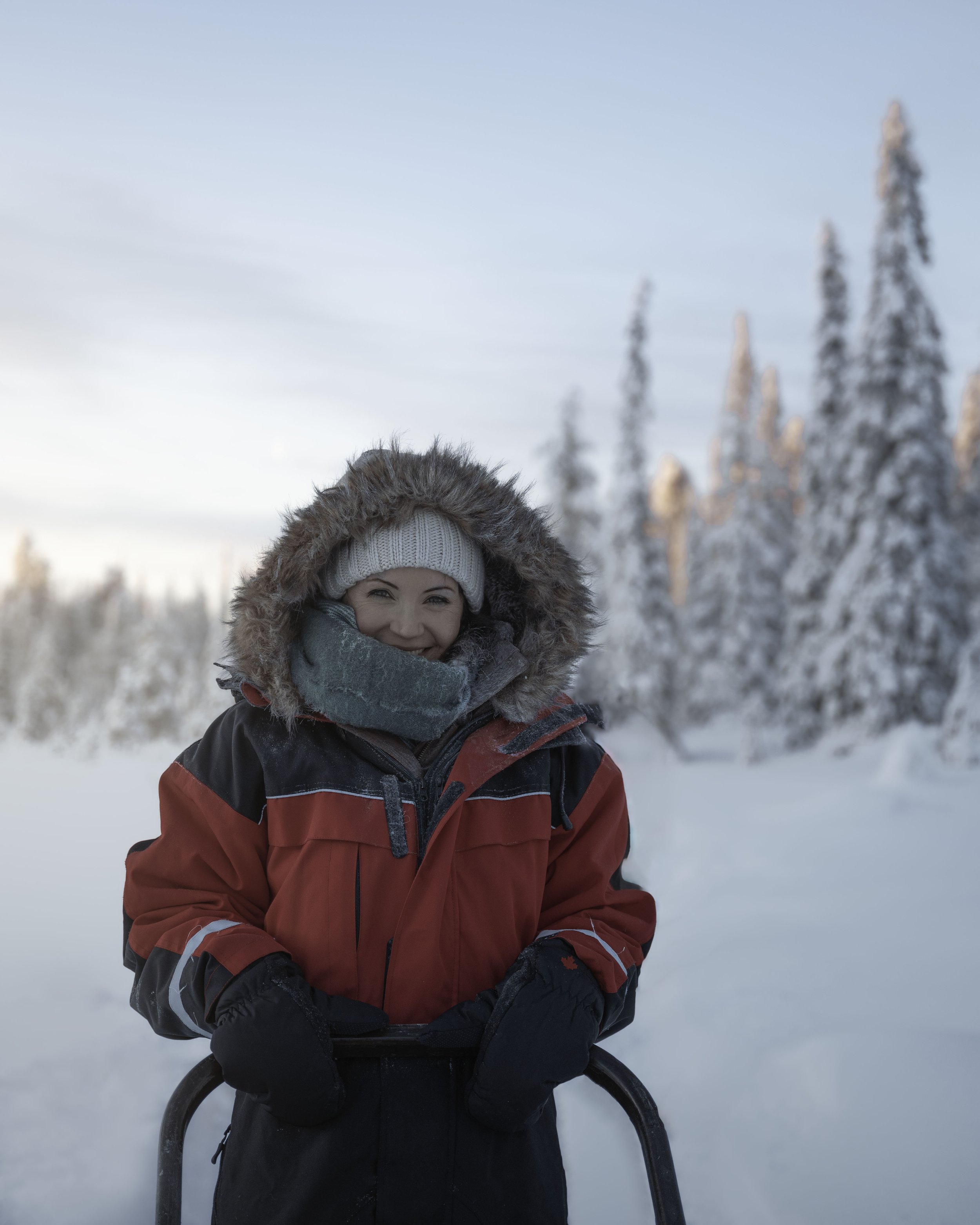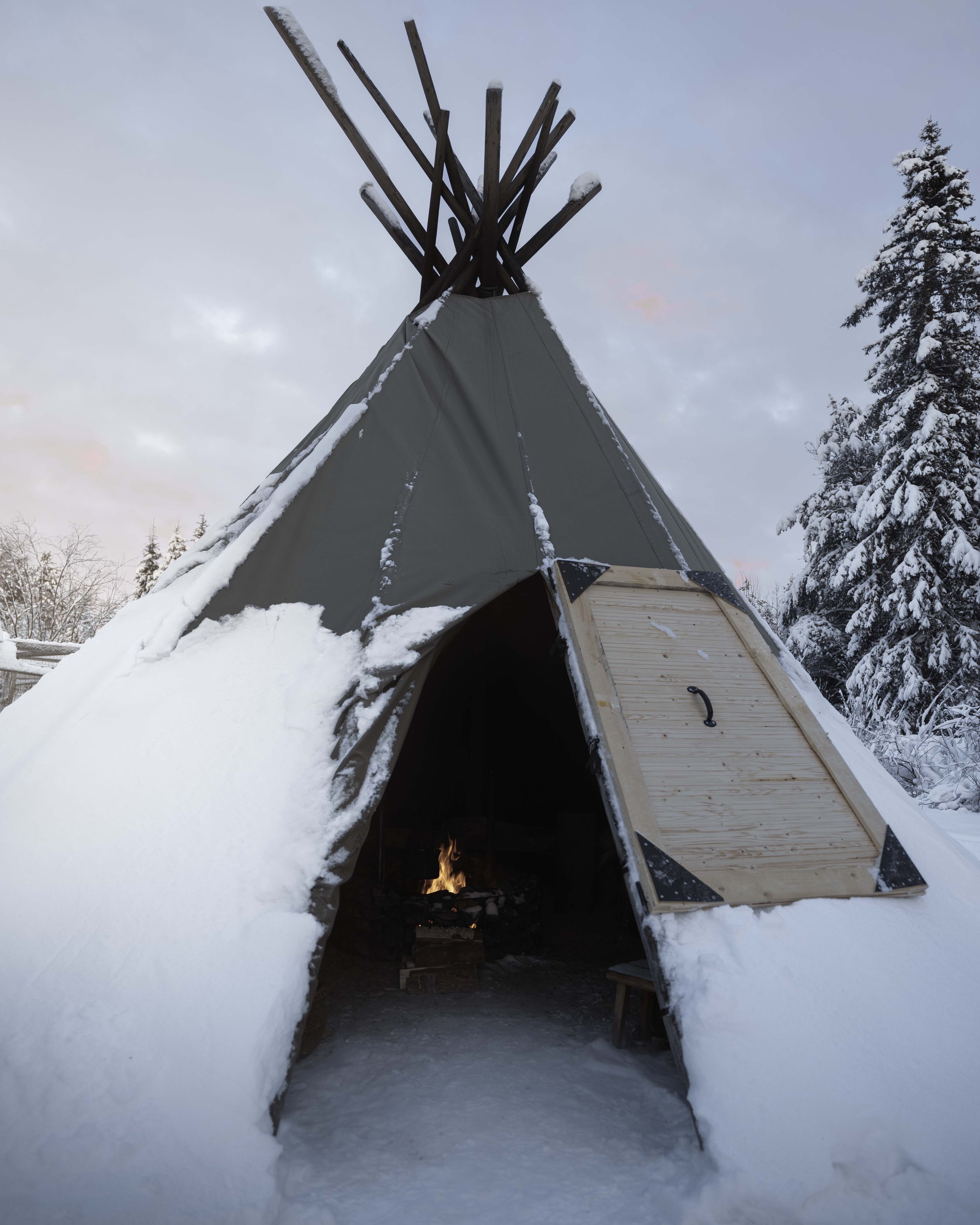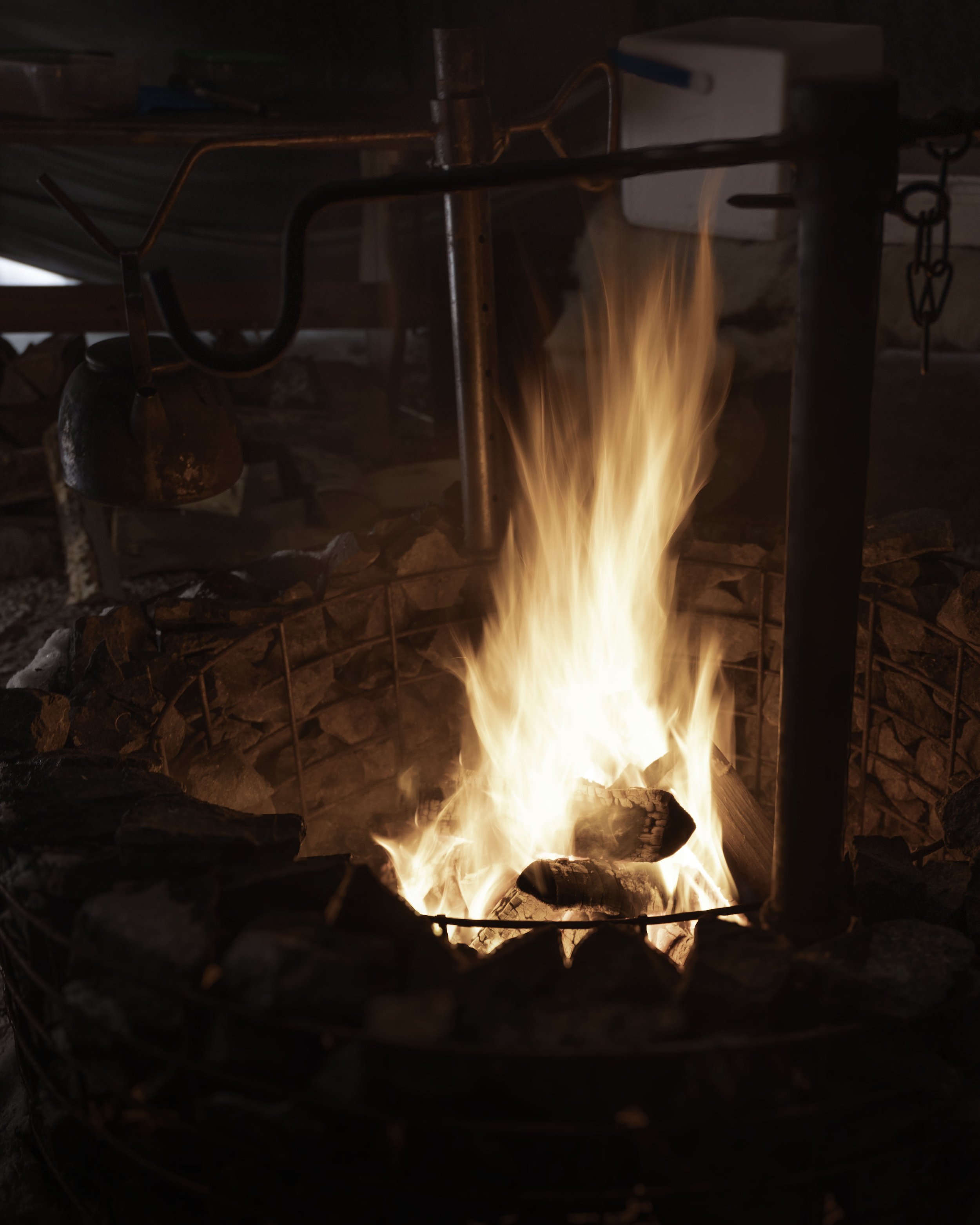My husky safari in Finnish Lapland
A dark start
The alarm rang at 7:30am. I peeped from under my sleep mask, but the cabin was still immersed in darkness. I reached for the curtains of the window behind my bed and lifted them to look at the sky.
It was December 16th, only five days before the year’s shortest day. The long Polar nights had undoubtedly settled in Lapland, and 7:30am looked too dark and early to get out of bed.
But I had exciting plans for that day, and spotting a few twinkles against the night blue only added to the thrill: could it be that a sunny day was ahead?
During breakfast, I watched as a gentle blush appeared at the horizon and slowly expanded in a gradient above it. And when the world had taken all the colours between lilac, pink and white, the iced snow was already cracking under the tires of our car. A forty-minute drive was separating us from our 10:30am appointment at Kota Husky. The plan for the day was a 20-km (12.5 miles) husky safari in Riisitunturi National Park.
The road looked like a silver ribbon unfolding through a seemingly endless forest of snow-loaded trees. From time to time, we would pass what could either be a field or a lake. We wouldn’t be able to determine which because layers of snow had turned them into white expanses. The only interruption to the candy palette were the red or yellow wooden cabins we caught quick glimpses of as they appeared in sudden clearings.
Enraptured as I was by the beauty of the winter wonderland all around me, I almost felt overwhelmed when a herd of reindeers strolled out of the forest. These soft-nosed gentle creatures are one of the reasons why, regardless of the state of the roads, one must drive very carefully in Lapland. Reindeers really don’t seem too bothered by traffic, and they will also often take their time to clear a road. It was the case on that morning. We waited for the whole herd to complete the crossing and, still euphoric from our first wildlife spotting, covered the last of the distance to Kota Husky.
An unexpected journey
On our arrival we were welcomed by Jarkko, our mentor and guide for the day. A quick glance at our attire and he recommended extra layers. For reference, I was wearing a thermal layer both under my fleece and my ski pants, two pairs of socks under my snow boots, a neck-warmer, a thick scarf, glove liners, mittens, and a heavy winter parka. But in hindsight, I am oh so thankful for Jarkko’s experienced eye. I ended up wearing a third pair of socks, thicker gloves and sturdier ski boots, and overalls on top of ALL the clothes I was already wearing - parka included. As I soon discovered, if you are on a speeding sled and the air temperature around you is at least -10°C, you do need all those layers.
Our team of dogs was already harnessed and, if the howling was anything to go by, keen on hitting the snowy paths. But for us it was time for a 10-minute flash mushing course. Jarkko gave us thorough instructions on how to ‘drive’ a husky-pulled sled. Ultimately, the main points he made were two:
1) Use the brakes regularly to avoid giving free rein to the dogs and likely lose control of the sled
2) Let go of the sled if your feet slide off it: the dogs will not stop, and you are just going to be dragged forward
The first point felt like the natural thing to do while mushing. The second one not so much when, later, the sled swung to the side up a snowbank, I lost control of it, my feet touched the rolling ground, and the dogs happily kept on galloping away while I was holding onto the sled handle, legs dragging on the snow behind me. But I did let go eventually.
What I learned in three sledding hours is that mushing a team of huskies requires some work and a lot of awareness. While dogs generally follow the lead of the sled in front and tend to stick to the marked trail, the sled itself needs to be kept straight on uneven terrain, especially on bends. There is a lot of braking, regular direction adjusting, and even some pushing involved. Picture or video taking is not, and should not be, a possibility while driving.
There are usually two people on each sled, one mushing, and one sitting in front. Halfway through the journey, the roles are swapped.
I will unashamedly admit that it was when sitting in the front of the sled, all cosy under a few blanket layers, that I found the ride the most enjoyable. Sitting so close to the ground and feeling it slide away fast under me; seeing the world from the same level as the six wonderful creatures quietly galloping in front and on whose strength and willingness we were completely relying on; listening to the muffled silence of the pristine snowy landscape all around us, trees like bowing giants bobbling at our passage, and a low winter sun making the frozen forest glitter.
And that constant feeling of gratitude and respect for that team of small but strong furry friends that were selflessly making the magic happen.
The all-important after
At the end of the 20-km ride, we spent some time petting our team of huskies and were then guided on a tour of the kennels, which looked spacious and responsibly laid out. There was adequate shelter and a playground for exercise on off-duty days.
Every ethical husky farm should include a tour of their kennels in their safari. For more ways to identify ethical companies, check the Guide to an ethical husky safari.
The tips of my feet were just starting to freeze when we were invited to spend some time inside a cosy lavvu, the traditional tepee of the Samis, Lapland’s native people. Here, we sat around a roaring fire and enjoyed the comfort of some non-alcoholic glögi (Finnish mulled wine) served in traditional kuksa cup, and tasty rye bread sandwiches - which included a vegetarian option.
We all exchanged impressions, savoured the memorable experience we just had, and listened to Jarkko telling us about the story of Kota Husky, the running of the company, and how they address the tricky low tourist seasons. We also asked about breeds (mainly Siberian huskies and a few Alaskan ones), individual personalities, and general welfare of the dogs.
Finally, we returned the gear we had borrowed and lingered with the huskies a little longer before heading to our unexciting mechanical mean of transportation – our car.
Final considerations (the least fun part)
On the days following our husky safari, a feeling of bliss and gratitude lingered, especially when reviewing pictures and video footage from our experience.
Even in hindsight, I feel quite comfortable about my choice of Kota Husky, particularly after seeing how well they seemed to look after their dogs and how keen our guide was to answer difficult questions.
And yet, will I do it again? I am afraid I don’t think so.
As much as I feel that I did all I could to ensure my choice would be an ethical one, I still don’t feel completely comfortable promoting the industry wholeheartedly. The risk of encouraging unethical businesses is high, especially within the realm of fast tourism.
I appreciate this sounds hypocritical on my part, so I won’t try to discourage you from trying to look for a husky safari if that feels important.
But I do encourage you to do your research. Start by reading my Guide to an ethical husky safari, and then spend time looking for well-established, reputable businesses.
And if you don’t consider that a worthwhile use of your time, then I have an even better piece of advice for you... How about a snowmobile safari instead?
